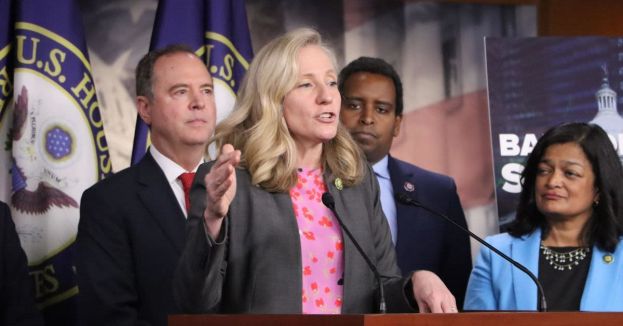
100percentfedup.com
JUST IN: New Trump-Appointed U.S. Attorney FIRES Two Top Prosecutors in Letitia James Fraud Case
After being appointed to the role of U.S. Attorney for the Eastern District of Virginia, Lindsey Halligan is making some big moves.
Not only has she done what her predecessor refused to do and brought charges against Letitia ‘Big Tish’ James for mortgage fraud, but she is also cleaning house.
It’s now being reported that Halligan has fired two top prosecutors in the Letitia James fraud case.
Elizabeth Yusi, who was the top prosecutor in the Norfolk office, and her deputy Kristin Bird were cut loose on Friday.
Here are the details:
BREAKING: Two prosecutors who were alleged LEAKERS have just been FIRED from the Eastern District of Virginia by US Attorney Lindsey Halligan, and stripped of their clearances
Elizabeth Yusi and Kristin Bird were reportedly “skeptical” of the fraud case against Letitia James… pic.twitter.com/L4zN8H8U5U
— Eric Daugherty (@EricLDaugh) October 17, 2025
BREAKING: Two prosecutors who were alleged LEAKERS have just been FIRED from the Eastern District of Virginia by US Attorney Lindsey Halligan, and stripped of their clearances
Elizabeth Yusi and Kristin Bird were reportedly “skeptical” of the fraud case against Letitia James
They previously LEAKED to MSNBC, per @julie_kelly2
GOOD! FAFO! Fire all malicious leakers and purge our prosecutorial offices of radical left-wing actors!
Yusi and Bird were reportedly fired after they resisted bringing charges against Letitica James.
ABC News reported:
Lindsey Halligan, the U.S. Attorney for the Eastern District of Virginia, has fired two top lawyers in the office who resisted an effort to bring charges against New York Attorney General Letitia James, sources familiar with the matter confirmed to ABC News.
Elizabeth Yusi, the top criminal prosecutor for the Norfolk office, and her deputy Kristin Bird were informed of their removals Friday — marking the latest firings in one of the most important federal prosecutorial offices in the country that oversees sensitive national security and terrorism cases.
Sources familiar with the matter said their firings were tied to their resistance to bringing charges against James.
The New York Times added:
Ms. Yusi, who oversaw major criminal cases in the Norfolk office of the U.S. attorney’s office for the Eastern District of Virginia, had pushed back against Mr. Trump’s public calls for Ms. James to be indicted, telling colleagues that she had not found probable cause to file charges, the people familiar with the matter said. It was not immediately clear why her deputy, Kristin G. Bird, had also been fired.
Allegedly, they were also accused of leaking details about the fraud case against Letitia James to MSNBC.
Julie Kelly on X said:
Sources tell me the prosecutors—Elizabeth Yusi and Kristin Bird—were fired, escorted from the building, and stripped of security clearances for leaking info on sensitive investigative matters to MSNBC and Fusion Ken in particular https://t.co/SgoPSBN5fv
— Julie Kelly (@julie_kelly2) October 17, 2025
Good riddance.
Your thoughts?













